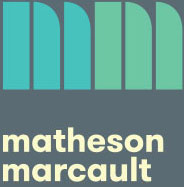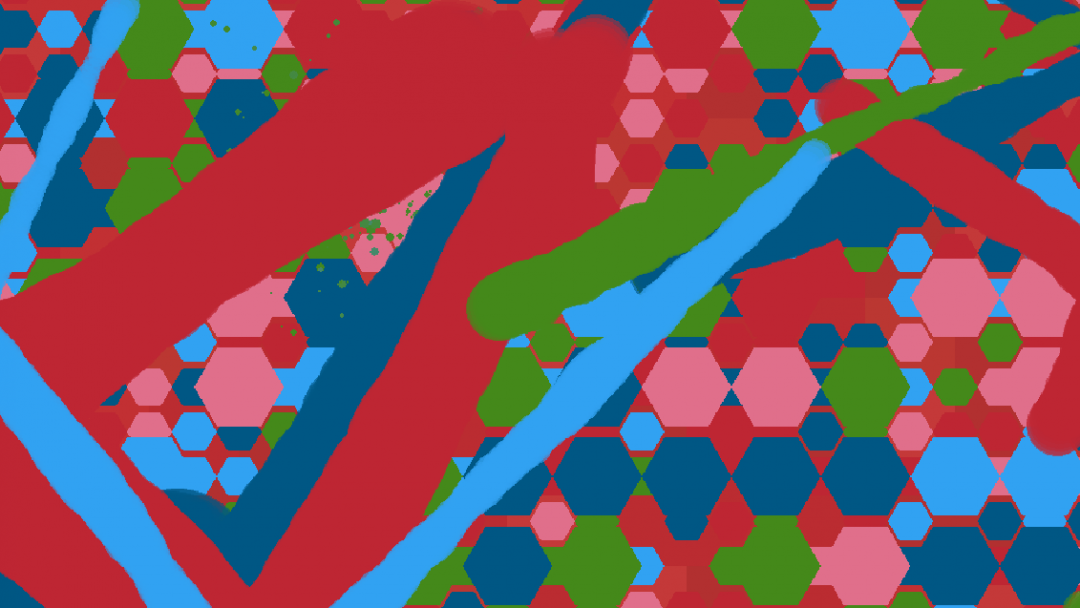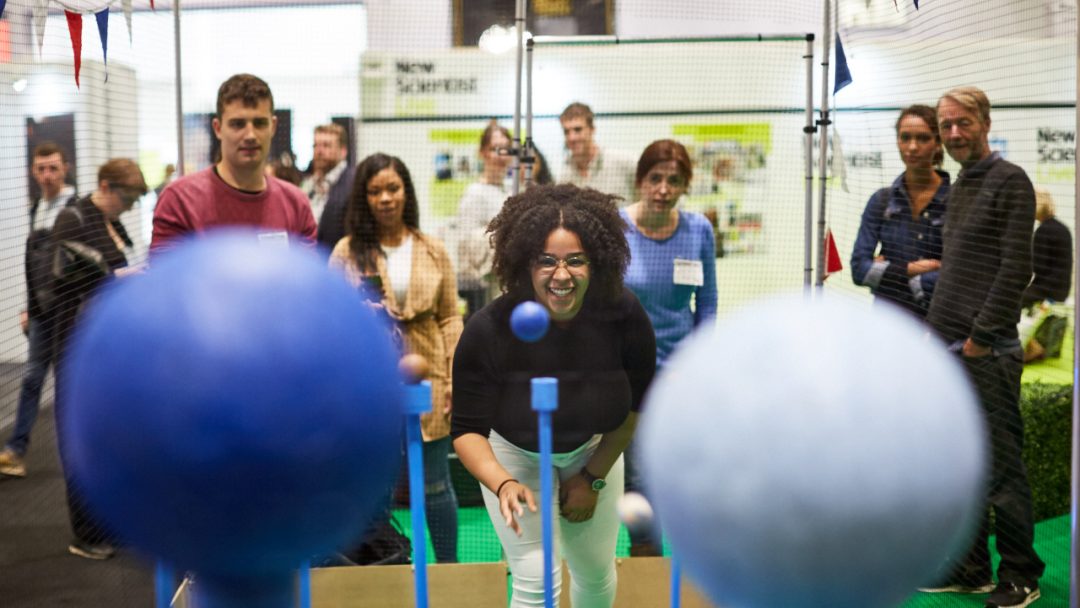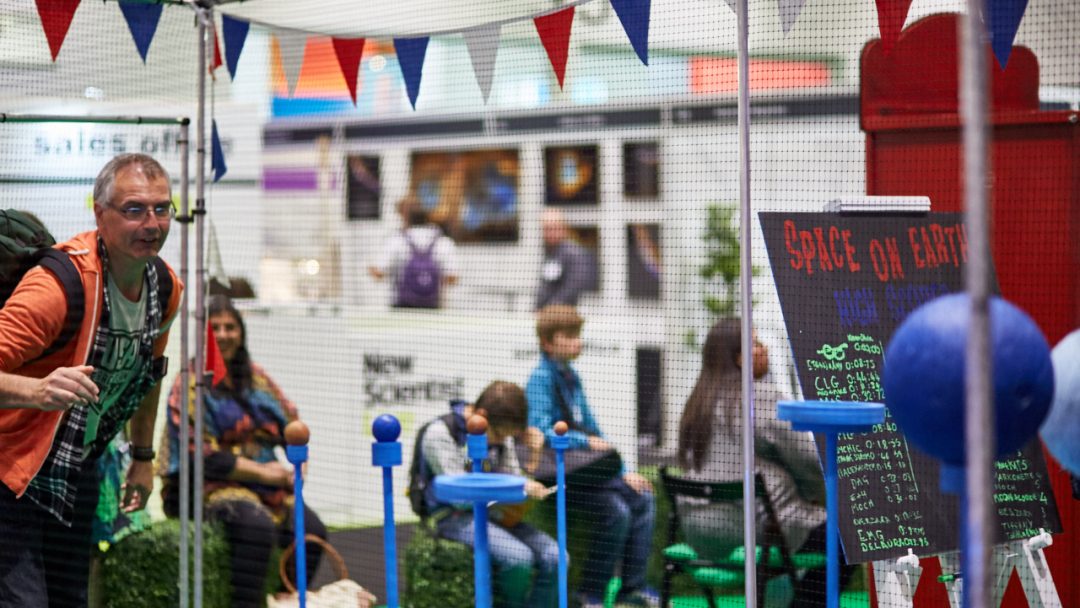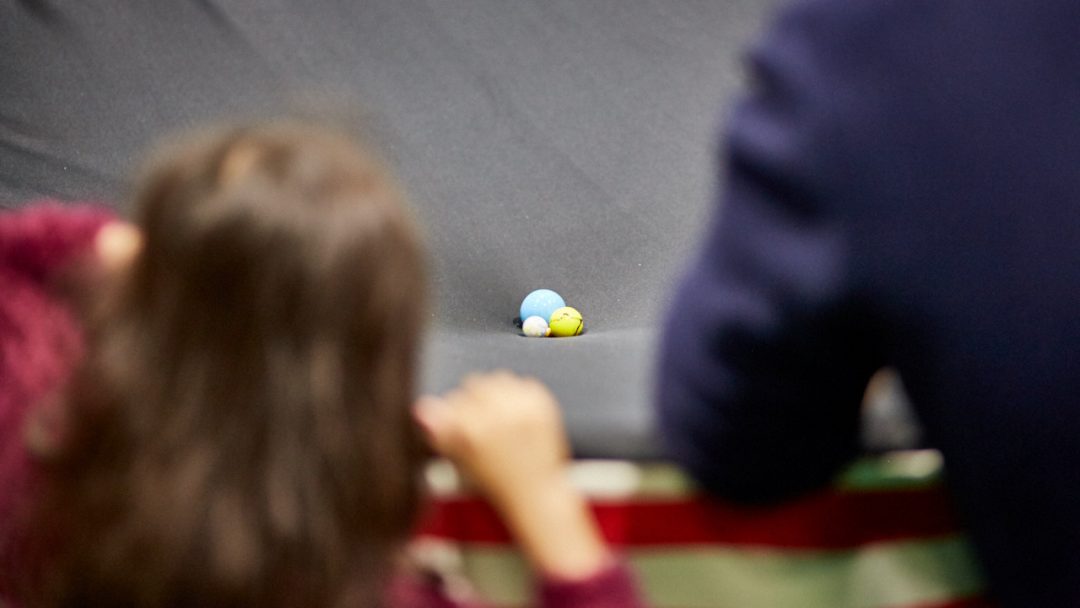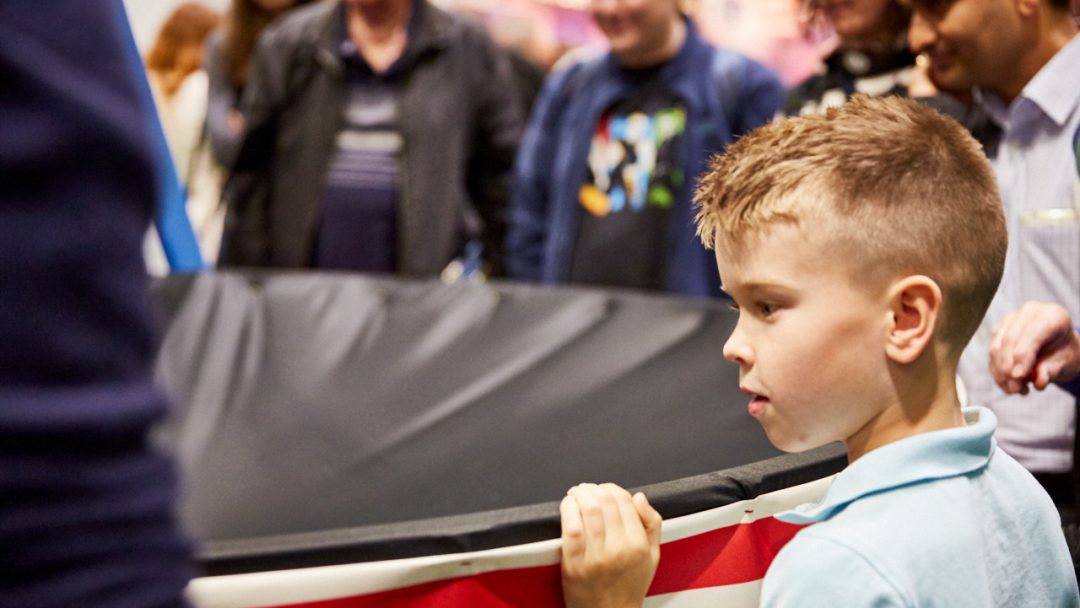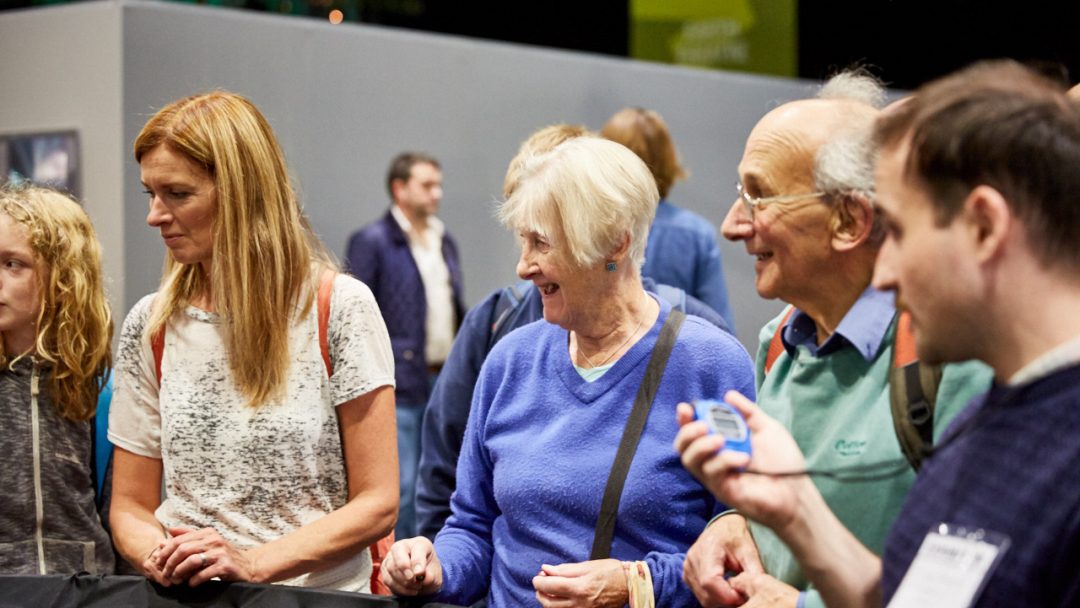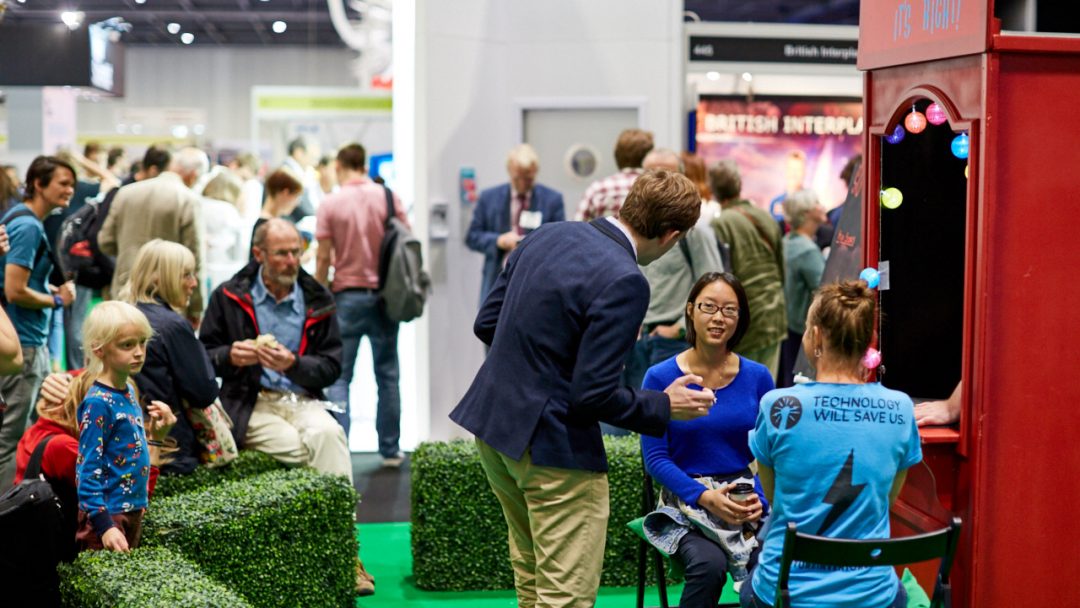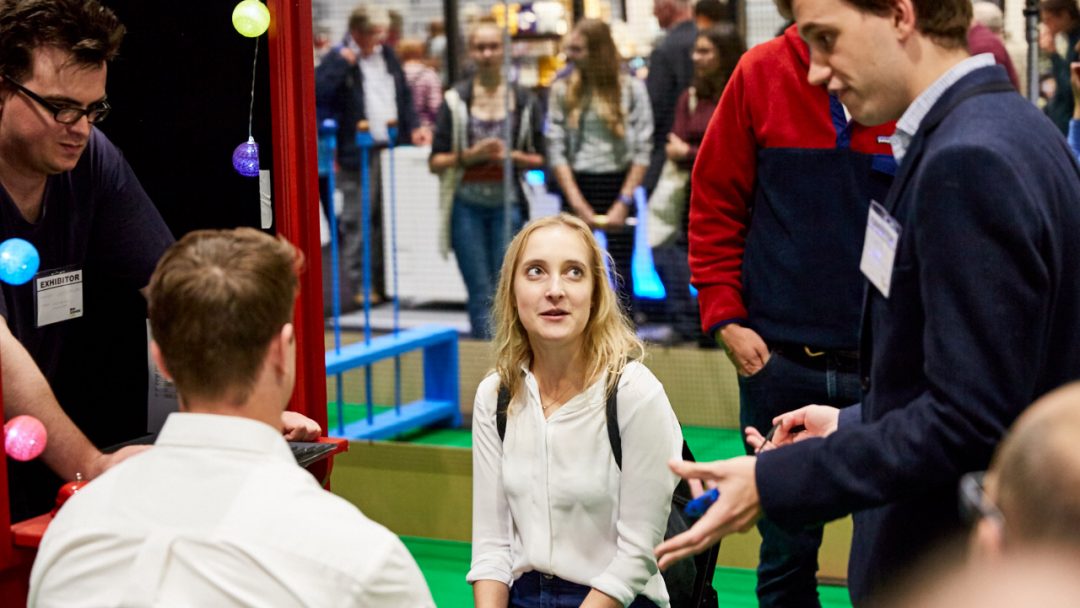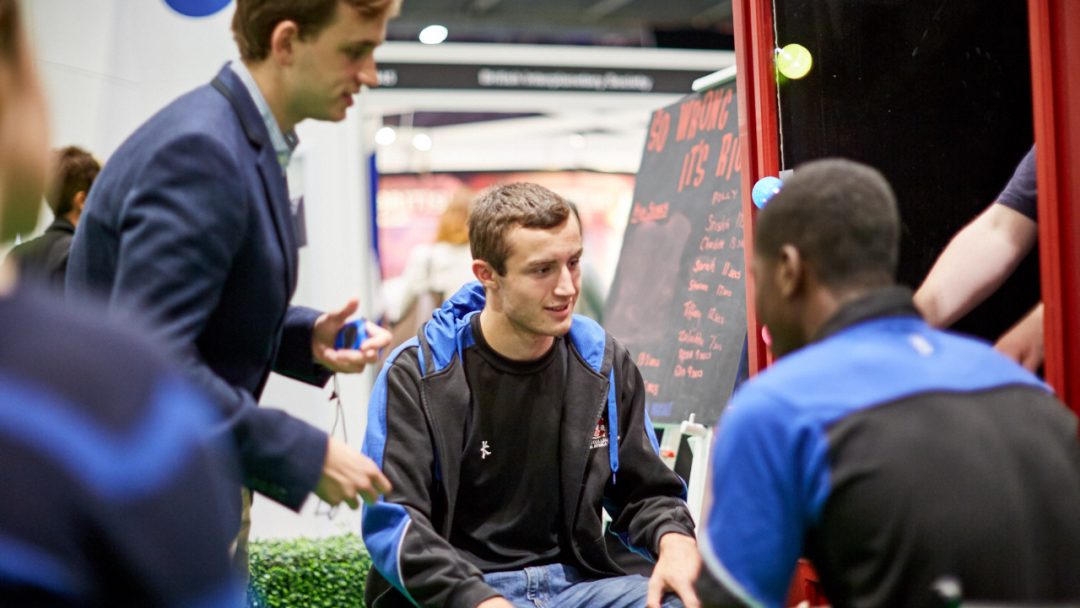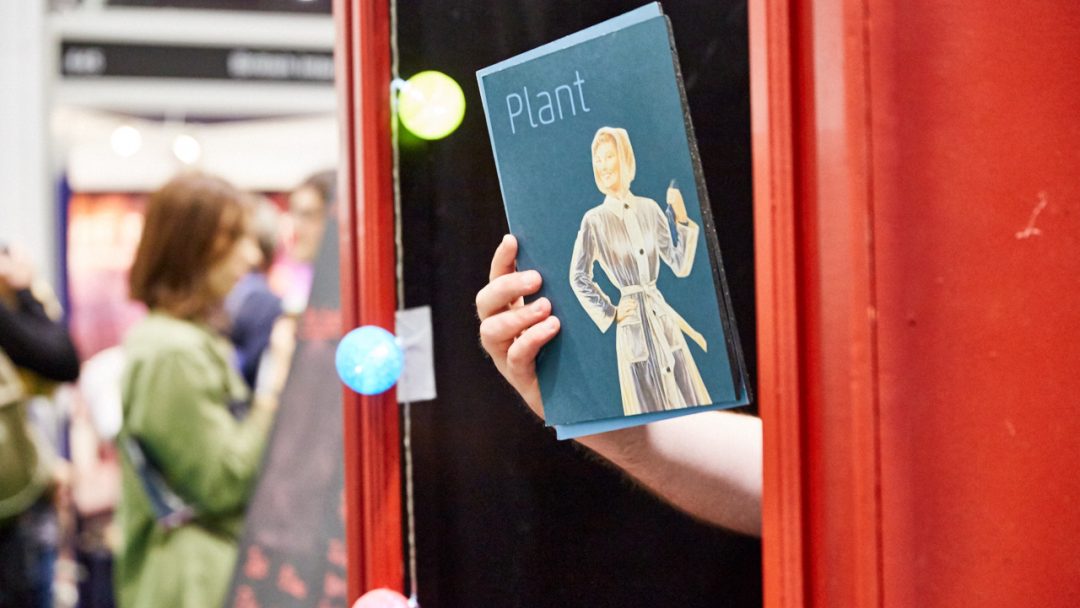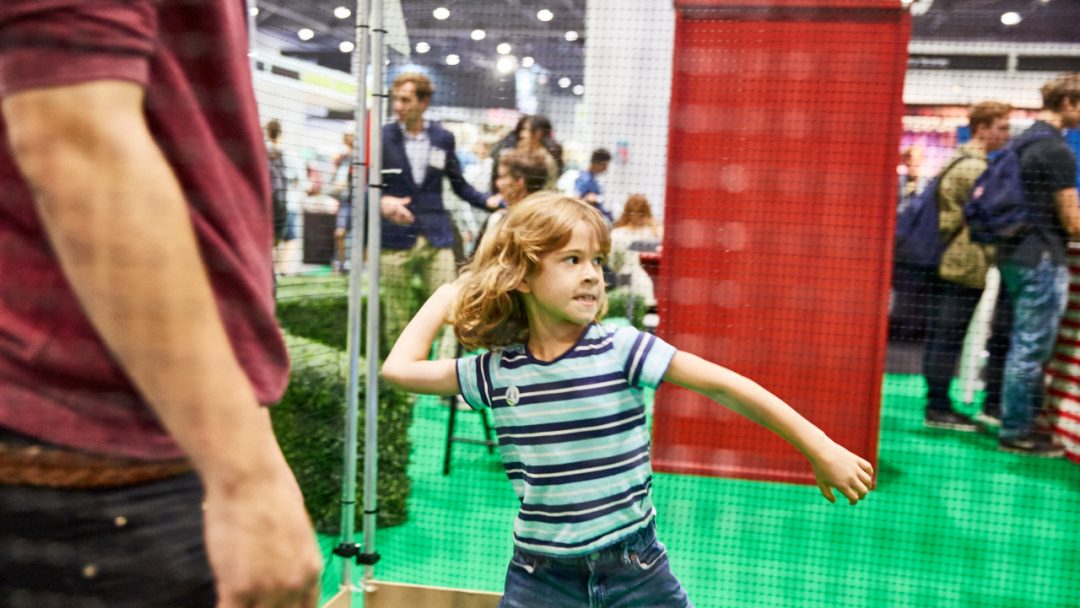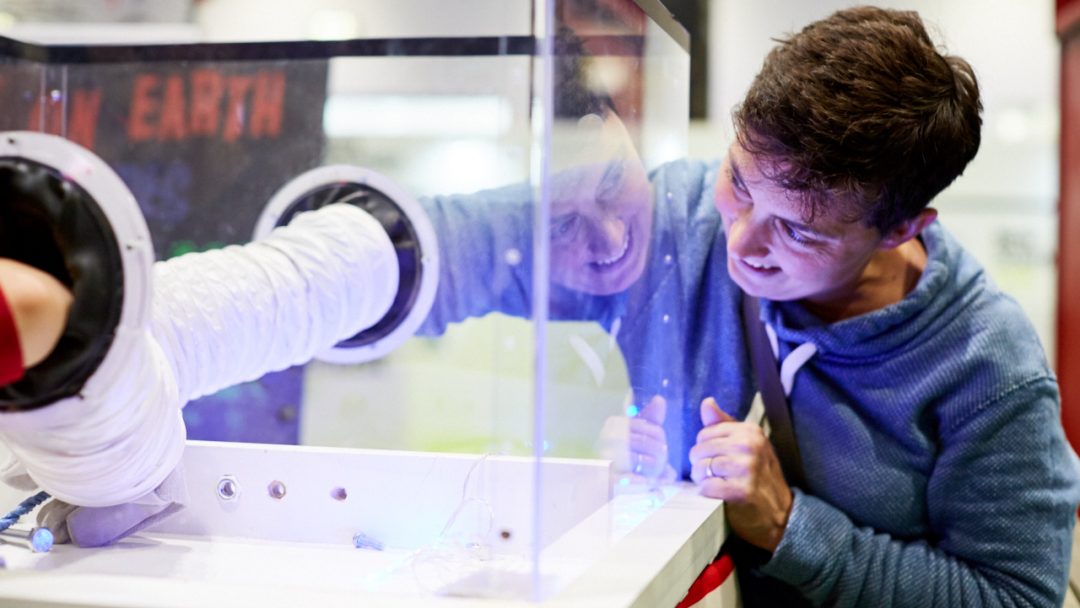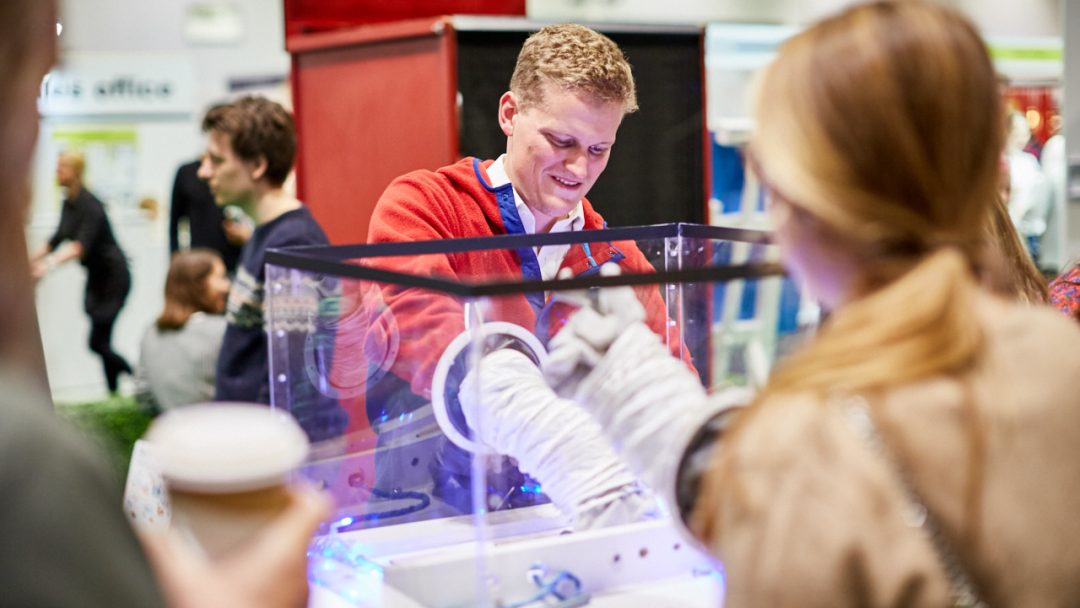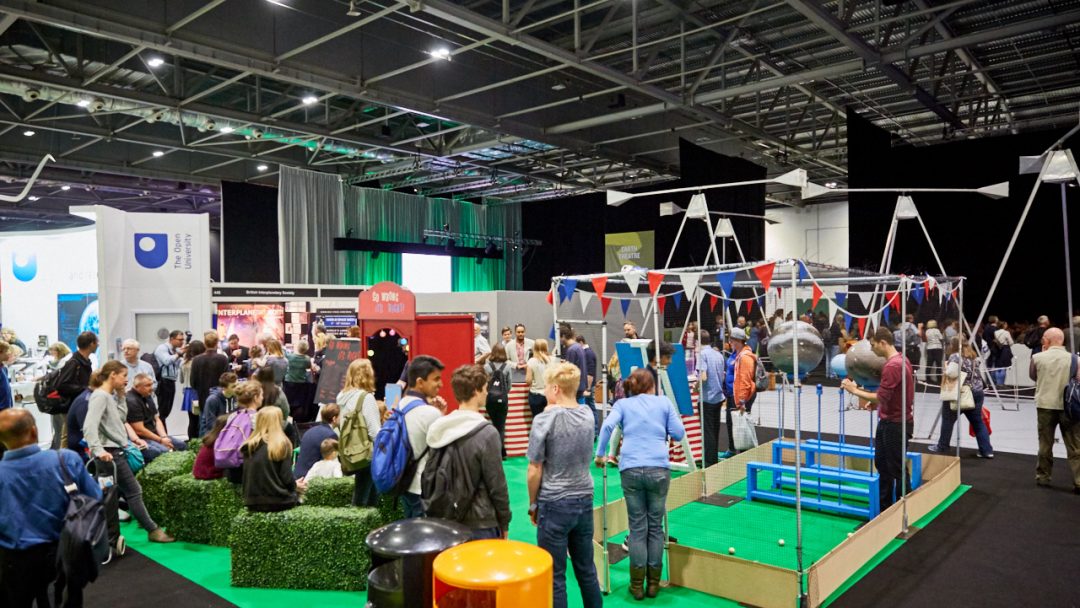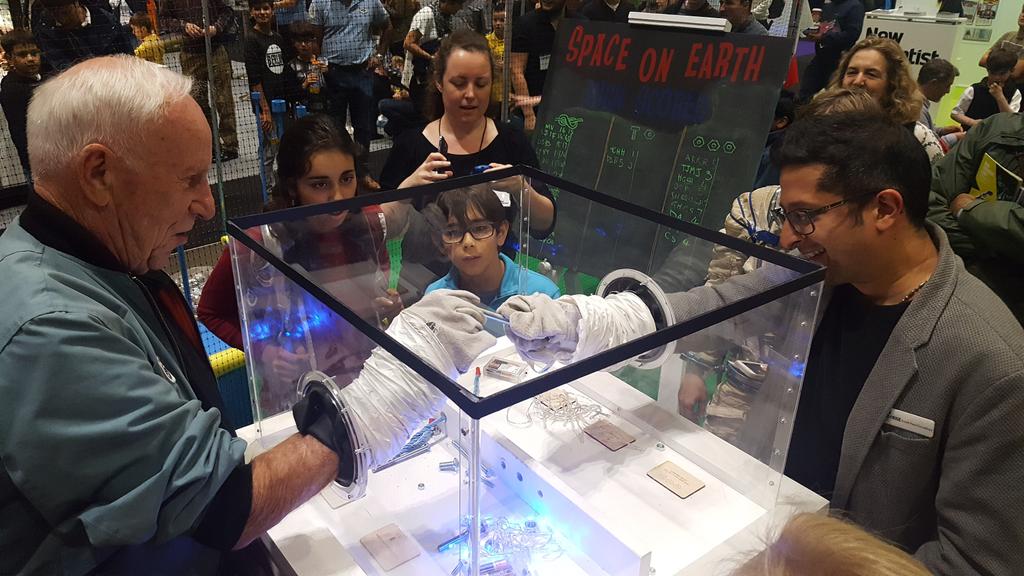We recently spent a week at QUAD in Derby as part of our digital participatory artist residency. We’ll be going back in February; this post discusses what we’ve been making so far, and the games we’ve been testing out with different groups of players at QUAD.
When we play a digital game, we expect the game to pay attention to us. To know what we’re doing. To respond. Which is reasonable, right?
But the board of a board game doesn’t know what piece you’ve put down (well, with some exceptions). A hopscotch grid chalked on the ground doesn’t light up to let you know where your stone fell.
During our time at QUAD, we’ve been thinking about what happens if you try to make digital games where the play is socially, rather than technologically, mediated. What possibilities exist in this design space that are different from both traditional digital games, and from purely analogue installations?
Playable Patterns is an ongoing experiment in playable digital work where the interaction and play happens purely between people; where the computer doesn’t look at what you’re doing. Specifically, it’s a series of patterns that move and change in particular ways, designed to be projected onto walls or floors in order to enable people to play.
